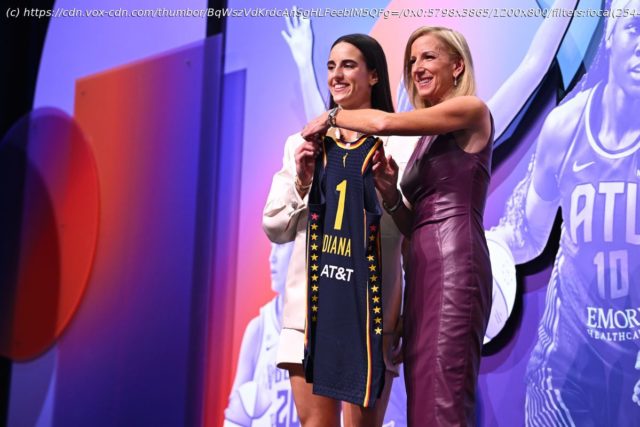The WNBA draft puts pro basketball’s longstanding pay gap on stark display.
Caitlin Clark, a college basketball phenom and the top pick at Monday’s WNBA draft, will make a staggeringly low salary in her rookie year compared to her NBA counterpart.
Despite her record-breaking performance in the NCAA and the energy that she’s generated for the sport, Clark’s base salary will be $76,535 as a rookie. In the NBA, meanwhile, the first draft pick is expected to make roughly $10.5 million in base salary their first year.
Players like Clark, who was picked by the Indiana Fever Monday night after multiple blockbuster seasons as a point guard for the University of Iowa Hawkeyes, and former Louisiana State University forward Angel Reese, who was signed by the Chicago Sky, have helped women’s college basketball achieve a landmark year. For the first time ever, the women’s final March Madness game, which drew as many as 24 million viewers, surpassed the viewership of the men’s final.
“It’s been catapulted this year to a whole new level,” says University of Michigan sports management professor Ketra Armstrong. “People are tuning in to the WNBA draft that never had before.”
The fresh attention for the WNBA draft, however, is also spotlighting the problems the league has had with pay equity. For years, the WNBA’s salaries have lagged the NBA’s by a massive margin. That’s due in part to the leagues’ differences in revenue and season lengths. But other factors, like differences in collective bargaining agreements and revenue-sharing, also play a big role.
Because of how closely sports observers are following Clark, some fans have raised questions about these issues — and her role in addressing them. “Can Caitlin Clark fix the WNBA and NBA pay gap?”, one Forbes article asked.
That framing misunderstands some of the central causes of the gap, however. While Clark and Reese could well bring more eyes to WNBA games, the issue of pay gaps is an institutional one. As such, it’s not in the power, nor is it the responsibility, of any one player to solve.
“The challenges facing women athletes, from pay disparities to limited media coverage, stem from entrenched societal norms [and] institutional biases … that cannot be remedied by the actions of one individual alone,” says Georgetown University sports industry management professor La Quita Frederick.






